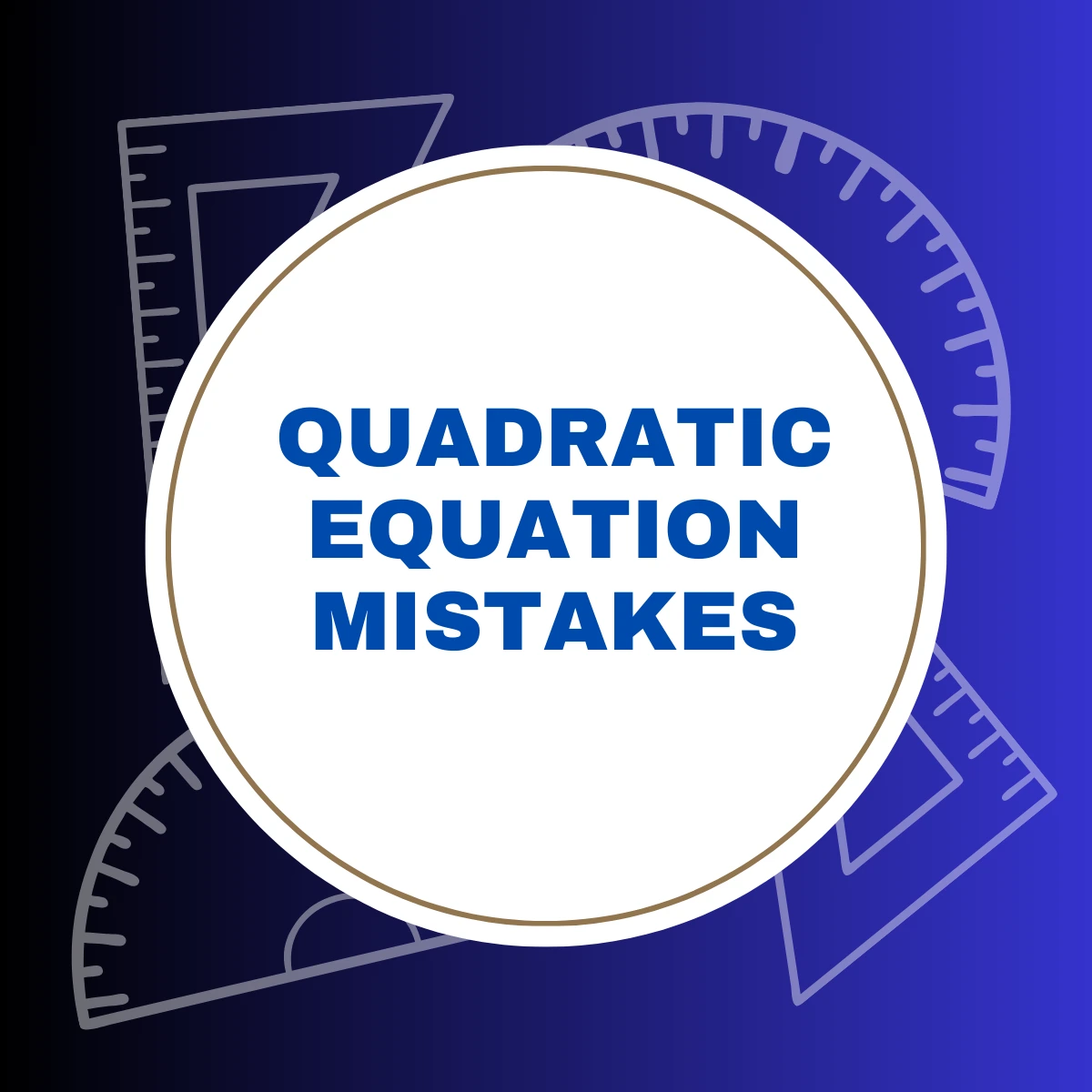Quadratic equations can be tricky, and even experienced students sometimes make avoidable errors. This guide highlights the most common quadratic mistakes and provides tips to avoid them, so you can solve these equations with confidence and accuracy.
1. Sign Errors in the Quadratic Formula
One of the most frequent mistakes is mishandling negative signs when substituting values into the quadratic formula:
x = [-b ± √(b² - 4ac)] / 2a
- Forgetting to negate 'b' (e.g., using -7 instead of +7 when b = -7).
- Incorrectly squaring 'b' (remember, (-7)² = 49, not -49).
- Dropping the ± symbol, leading to only one solution instead of two.
Tip: Always write parentheses around substituted values, especially negatives, and double-check your signs.
2. Errors When Factoring
Factoring is quick but prone to mistakes:
- Choosing incorrect factor pairs that don’t multiply to 'c' or add to 'b'.
- Missing a common factor before factoring the quadratic.
- Forgetting to set each factor equal to zero to find all solutions.
Tip: Verify your factors by expanding them back out, and always check for a greatest common factor first.
3. Mistakes Completing the Square
Completing the square requires careful algebra:
- Forgetting to add the square term to both sides of the equation.
- Incorrectly halving 'b' or squaring it.
- Sign errors when moving terms across the equals sign.
Tip: Write out each step explicitly, and check your calculations carefully.
4. Misinterpreting the Discriminant
The discriminant, D = b² - 4ac, tells you about the nature of the roots:
- If D > 0: two real solutions.
- If D = 0: one real solution (double root).
- If D < 0: two complex solutions.
Common mistakes include:
- Calculating D incorrectly due to sign or arithmetic errors.
- Assuming complex solutions mean "no solution" (they are valid, just not real).
Tip: Calculate the discriminant first to guide your solving strategy.
5. Forgetting to Simplify Solutions
After applying the quadratic formula, students sometimes leave answers unsimplified or incorrect:
- Not reducing fractions fully.
- Leaving square roots un-simplified when possible.
- Missing the ± symbol, leading to incomplete solutions.
Tip: Always simplify your final answers and include both solutions when applicable.
6. Ignoring Special Cases
Special quadratic forms can be solved more easily, but students often overlook them:
- No linear term (b=0): Solve by isolating x² and taking square roots.
- No constant term (c=0): Factor out x and solve the resulting linear equations.
- Perfect square trinomials: Recognize and factor as (x ± p)².
Tip: Look for shortcuts before jumping into the quadratic formula.
7. Graphing Errors
When graphing quadratics, common mistakes include:
- Incorrectly identifying the vertex or axis of symmetry.
- Plotting the parabola opening in the wrong direction (up vs. down).
- Misplacing x-intercepts or missing them entirely.
Tip: Use the vertex form or complete the square to find the vertex, and check the sign of 'a' for the parabola's direction.
Summary
By being aware of these common quadratic mistakes, you can avoid them and solve quadratic equations more accurately. Take your time, write out each step, and double-check your work. Practice is key to mastering quadratics!
